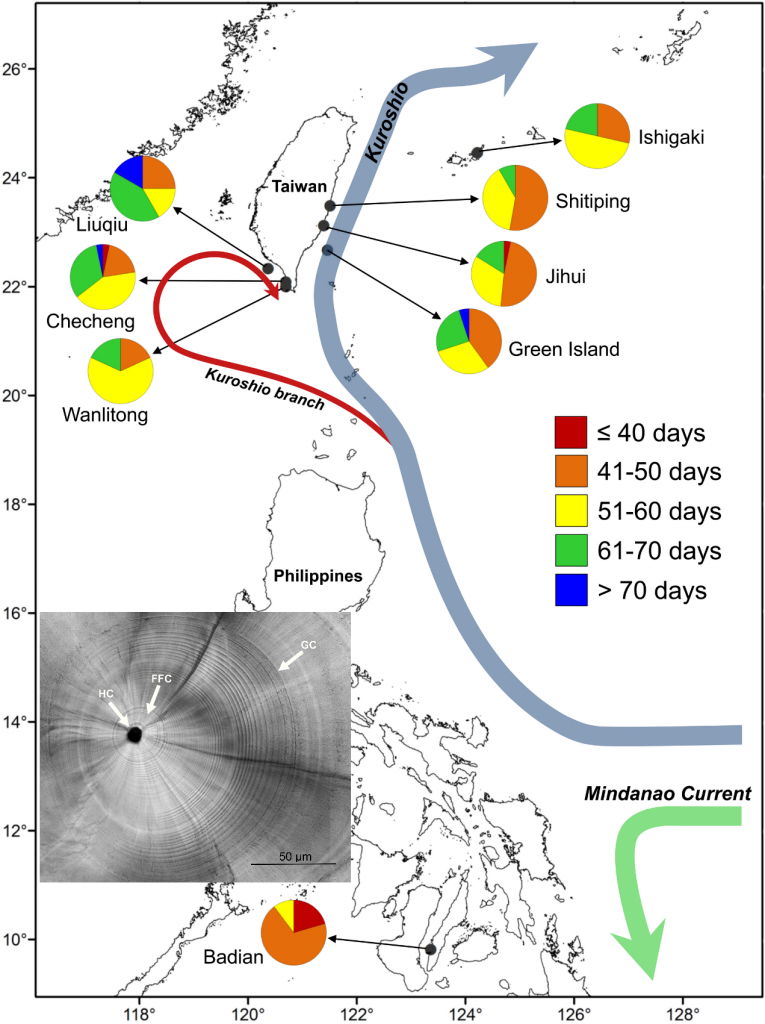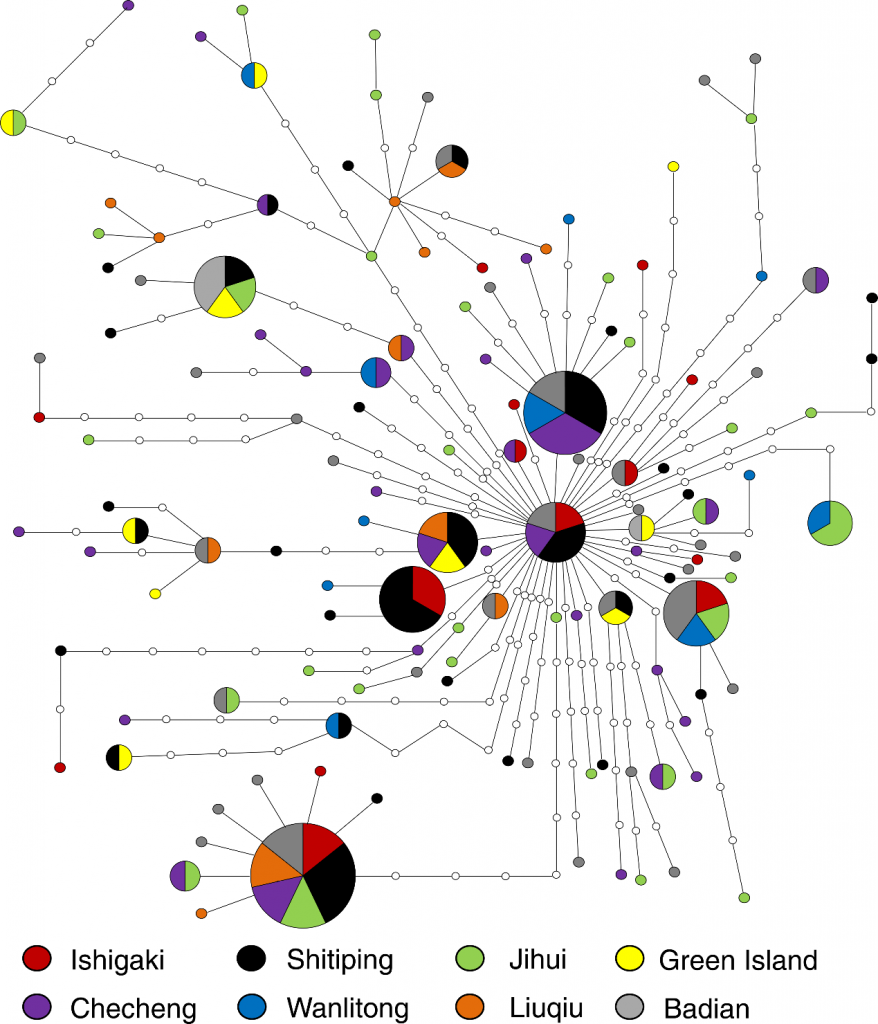Pelagic larval duration, growth rate, and population genetic structure ofthe tidepool snake moray Uropterygius micropterus around the southern Ryukyu Islands, Taiwan, and the central Philippines
Wen-Chien Huang Jen-Chieh Shiao
A study by graduate student Wen-Chien Huang and professors Jen-Chieh Shiao and Te-Yu Liao evaluated the effect of pelagic larval duration of demersal fishes on the population genetic structure. The team analyzed cyt b and COI genes of mtDNA and otolith microstructure of 195 tidepool snake morays, Uropterygius micropterus, collected from 8 locations in 3 countries (Japan, Taiwan and Philippines). High haplotype diversity and low nucleotide diversity were found in the fish, but genetic analysis suggested fluent gene flows among the morays in the study regions. The morays have relatively long pelagic larval duration of 1-3 months. The larval duration was shorter and otolith growth rate was higher for the eels collected in Philippines. Higher water temperature might explain the shorter larval duration and faster growth rate. The results indicate that the relatively long larval duration of the morays might have ensured the sufficient gene flow among the study areas, whereas larval growth was likely influenced by regional water temperature.
Map of sampling sites for U. micropterus. Within the pie charts, colors indicate the percentages of pelagic larval duration (PLD) for each sampling site. The inserted image of otolith microstructure illustartes the hatch check (HC), first feeding check (FFC), and growth check (GC) of the moray.
Minimum spanning network built from 185 concatenated mtDNA sequence (1,336 bp) of U. micropterus with 132 haplotypes. Colors represent correspondent sampling sites; the size of each pie chart is proportional to the number of individuals; hollow circles are haplotypes that were not collected in this study.












